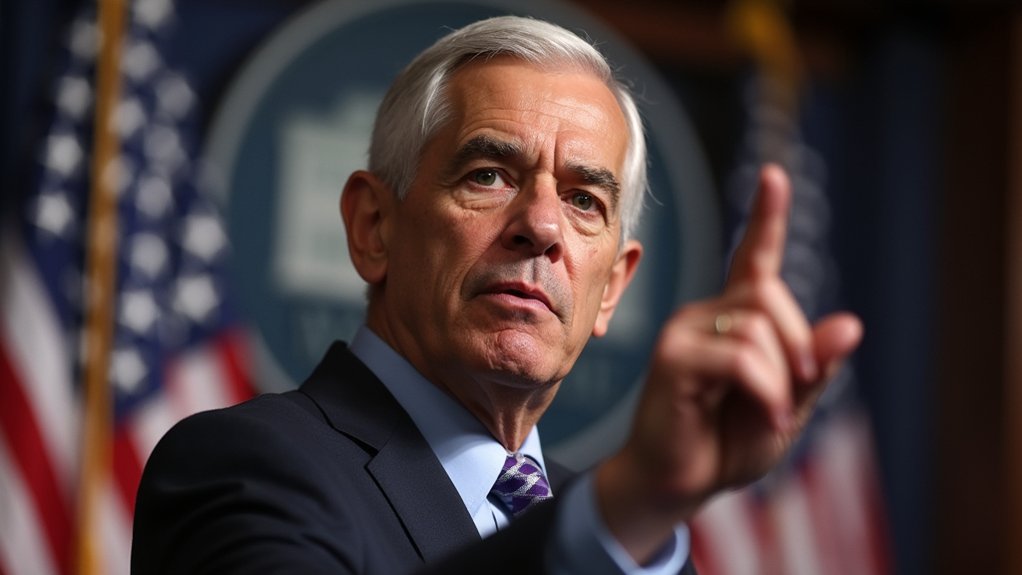Powell’s latest monetary policy address delivered a masterclass in Federal Reserve doublespeak—simultaneously acknowledging the complexities of managing inflation while offering the reassuring certainty that nothing particularly decisive would happen anytime soon.
With headline PCE inflation lingering at 2.6% and core measures at 2.9%, the Fed chair painted a picture of an economy caught between conflicting pressures, where tariff-induced price increases and immigration policy shifts complicate the already delicate task of achieving price stability.
The Fed navigates an economic minefield where tariffs and policy shifts transform routine inflation management into an exercise in monetary tightrope walking.
The federal funds rate remains anchored at 4.25%-4.5%, marking five consecutive meetings of inaction after the Fed’s aggressive 100 basis point cuts in late 2024. Powell’s acknowledgment that rate cuts “may warrant” consideration—conditional, naturally, on data dependency—reads like the monetary policy equivalent of “we’ll see.”
This cautious stance reflects the Fed’s recognition that inflation risks currently outweigh employment concerns, despite unemployment hovering around 4.2% and job growth plummeting from 168,000 monthly additions in 2024 to a mere 35,000 in 2025.
The labor market’s curious state of balance (Powell’s phrase, not ours) reveals an economy where traditional relationships between employment and monetary policy have grown increasingly opaque. July’s disappointing 73,000 jobs added fell significantly below the 110,000 estimate, reinforcing concerns about the sustainability of current employment levels. Internal Fed debates suggest some members favor preemptive rate cuts to support weakening job markets, while others prioritize inflation control—a disagreement that virtually guarantees continued policy paralysis.
For cryptocurrency markets, this environment presents both opportunity and peril. The current tight liquidity conditions favor established digital assets like Bitcoin over speculative altcoins, while the prospect of prolonged policy uncertainty adds volatility risks extending into 2026. The expanding stablecoin market cap of over $250 billion demonstrates how institutional adoption of cryptocurrency infrastructure continues despite broader market uncertainties.
Powell’s approaching term expiration in May 2026 introduces additional variables, as markets begin pricing potential policy shifts under new leadership.
The Fed’s abandonment of average inflation targeting in favor of flexible 2% goals signals institutional recognition that previous frameworks proved inadequate for current economic realities. GDP growth slowed to 1.2 percent in the first half of the year, reflecting broader concerns about the economy’s underlying momentum and consumer spending weakness.
Whether tariff-induced inflation represents a one-time price adjustment or persistent inflationary pressure remains hotly debated among governors, leaving markets to navigate an increasingly murky policy landscape where traditional indicators provide diminishing guidance for future monetary policy direction.








